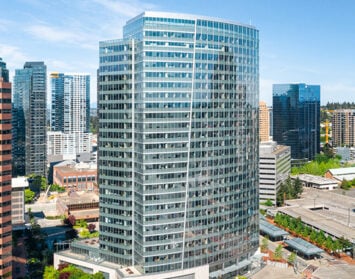It’s been nearly 14 months since I last dealt with the thorny issue of “operating expenses,” those something-extra costs in most office leases. And while my July 18 column delved into how such creative expense formulas can typically abuse clients, nothing then compares to the more recent dire situations in which office space tenants are getting the shaft from greedy landlords who are trying to puff up such expenses to cover the patently absurd prices they paid for their office buildings.
First some background is in order. Most downtown office building leases are “full service gross,” meaning the rent the tenant pays each month includes everything including the base rent, casualty insurance, common area maintenance, property management fees, janitorial services, maintenance, gas, water, sewer, and electricity. Buried well into the lease is a provision that allows the landlord to charge the tenant with any operating costs beyond what is typical after the first year of occupancy.
Recently, one of my clients received an unexpected bill for $79,378, labeled as “additional rent” – translated, operating expenses. This added cost kicked up the tenant’s rent to more than $3 per square foot in a “so-so” Class C building.
While the bill itself and its impact on the overall rent was startling enough, it paled in comparison to the subterfuge and outright trickery used by the building owner to look for every way to squeeze additional income out of his tenants. The landlord, who only recently had paid a monstrous sum for the building, had totally reformulated how operating expenses were to be calculated. His rationale and approach were not only distasteful, but worse, very difficult to follow and understand – even for someone like me who’s been in the business 20 years.
This wasn’t the first tenant to get dinged for the increased property taxes brought about by what building owners paid for their buildings in recent years. However, what made this especially untenable was this landlord’s use of confusing and obscure loopholes to compute the additional rent.
The details put the matter into context. The tenant leased the space in 2002, which became his base year for purposes of computing operating expenses. However, he renewed earlier this year, before the lease expired. Rather than allowing the operating expense “clock” to start when he actually signed the lease amendment, the landlord insisted that the new base year be 2008. Frankly, under the building’s former owner, the operating expenses had not been that much an issue and so the tenant accepted the provision to postpone the base year up to next year.
Four months into the new deal, the landlord finally gets around to providing the bloated estimates for operating expense. Hang onto your seats, this gets bumpy.
In 2005, the tenant’s pro rata share of utilities was $161,000. One year later, that number soared to $449,608. Was I asleep when SDG&E apparently announced a 300 percent hike in their rates over that 12-month period? Maintenance charges in 2005 were $593,000, but not for long. One year later, the new landlord jacked that up to $903,000 – a 160 percent increase in just one year. Likewise, the landlord’s administrative charges went from $428,736 in 2005 to $615,914 – a hefty 140 percent leap.
These hikes still weren’t enough and so the landlord decided to charge tenants for all the expenses to operate the building’s parking garage – expenses that had been paid by parking revenues, which now became pure profit to the landlord.
In the mist of all these hikes, property taxes for the new landlord increased by only 10 percent in that one-year period. Takes your breath away, doesn’t it?
So, what should a tenant do when confronted by such skullduggery? Well, call me, for one thing. Depending on the lease’s language, there may be options. Maybe I can help. At least, I’ll try.
An ounce of prevention is worth a pound of cure. To avoid such calamities, tenants should insist that office leases carefully specify the appropriate expenses that can be charged back to lessees in order to provide tenants with legal remedies in the event landlord charge backs are abused.
Most important, though, insist on a Tenant Audit Right in your lease that allows a tenant to contest additional charges. The cost of the audit is typically borne by the tenant and most provisions require that a Big 6 accounting firm be retained. Landlords hope that upfront expense will dissuade tenants from insisting on such a provision. But, the cost may well be worth it, given the excesses involved.
Landlords have various trade groups, the Building Owners and Managers Association (BOMA) for one, to help them conceive ways to fleece tenants. Perhaps it’s time for tenants to organize a Tenants Against Landlord Excesses (TALE) to counter such abuses. I’m game; when and where should we meet?
It’s about time for a TALE to wag the landlords’ dog.
Jason Hughes is founder of Hughes Marino, an award-winning commercial real estate company with offices across the nation. A pioneer in the field of tenant representation, Jason has exclusively represented tenants and buyers for more than 30 years. Contact Jason at 1-844-662-6635 or jason@hughesmarino.com to learn more.









